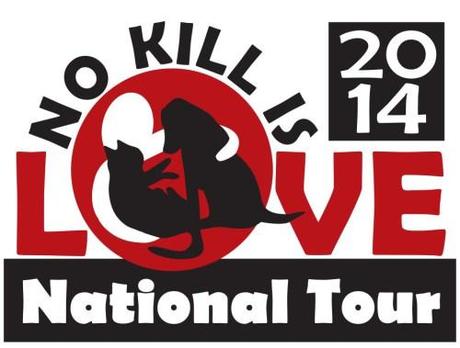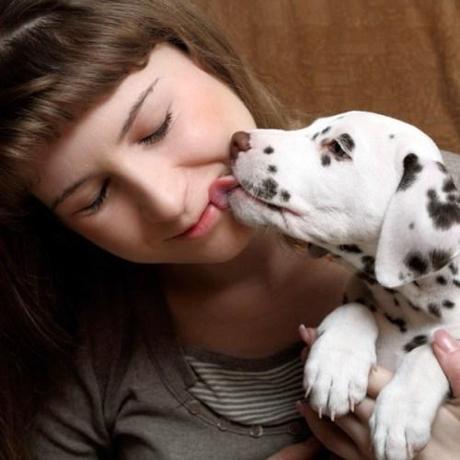Fostering is one piece of the NO Kill equation
“We all grew up believing that if you worked at a humane society or an SPCA, it was because you loved animals. And we were also told that the killing was a necessary evil and that nobody wanted to do it. And they wouldn’t do it if there was any sort of alternative… But then when the San Francisco SPCA created an alternative model and showed them that, indeed it wasn’t a ’necessary’ evil, it was just evil and we could end it, [the sheltering establishment] didn’t want to hear about it, they didn’t want to know and they felt so tremendously threatened by it that they did everything in their power to try and stop it.” –Jennifer Winograd, No Kill Advocacy Center, in the film Redemption.
http://www.nokillredemption.com/

Screenings:
- Troy, MI, September 4
- Chicago, IL, September 18
- Modesto, CA, September 20
- Ithaca, NY, September 27
- Buffalo, NY, September 27
- Houston, TX, October 7
- Los Angeles, CA, October 12
- Tallahassee, FL, October 25
“America is two countries now—the country of its narrative and the country of its numbers, with the latter sitting in judgment of the former. In the stories we tell ourselves, we are nearly always too good: too soft on criminals, too easy on terrorists, too lenient with immigrants, too kind to animals. In the stories told by our numbers, we imprison, we drone, we deport, and we euthanize with an easy conscience and an avenging zeal. We have become schizophrenic in that way, and pit bulls hold up the same mirror as the 2.2 million souls in our prisons and jails and the more than 350,000 people we deport every year. Every year, American shelters* kill about 1.2 million dogs. But both pro- and anti-pit-bull organizations estimate that of these, anywhere from 800,000 to nearly 1 million are pit bulls. We kill anywhere from 2,000 to 3,000 pit bulls a day. They are rising simultaneously in popularity and disposability, becoming something truly American, a popular dog forever poised on the brink of extermination.”
http://www.esquire.com/features/american-dog-0814?src=soc_fcbks
* the No Kill community would argue that we do not HAVE to kill. Some shelters CHOOSE to do so. Nathan Winograd suggests and has himself implemented the No Kill Equation as the head of a shelter (or two) where he took killing off the table of options and challenged his staff to come up with creative solutions to get pets adopted.

Can fostering pets save more shelter pets?
Rock and Rawhide thinks so.
There is an estimated 3-4million pets euthanized each year in US animal shelters. That’s 10,000 per day on average. There must be a way to curb at least some of this. There is. Fostering.
There is a strong lack of homes willing to open their doors to fostering a shelter pet. Maybe it’s because they assume that a shelter animal is “broken”, or that they think they would never be able to give the animal up to an adopter, it would break their heart. The former could not be further from the truth. And the latter is selfish. Imagine the heart exploding with happiness that the beautiful pet you have supported and loved, has found forever love with a great family.
Many shelter animals are down on their luck, and need a second chance. They have lived in homes before, they have lived with children, other pets, and life was great! But perhaps their human passed away, or maybe they fell on hard times and just couldn’t afford pet care any longer. And now Muffy or Fluffy or Spike or Spot is sitting in a cage wondering what on earth happened. Sure, there are some shelter pets who sadly have never felt love, or the affection of a human before. Some were abused or neglected. But all of them still have hope, they wag their tails, they purr.
One thing they all have in common is the dangerous waiting game. Will they get sick in the shelter? Will they go crazy if they are there too long? Will they gain bad behaviors because they are not receiving the natural love, attention and comforts that a home should provide? Will they make it out alive at all?
How the animals end up in the shelter in the first place is a societal problem that we alone cannot fix. But if people opened their homes to shelter pets we could save a bunch of lives and help animals transition into forever homes much more easily. That at least would be a start till our society puts a higher value on the lives and existence of our furry friends, till the law stands up for our four-legged buddies, till shelters are no longer overflowing with the unwanted.

Fostering is a wonderful experience. As a foster parent, you can set certain guidelines with the rescue group as to what type of animal you prefer. A certain breed, age, sex, temperament, that you think will fit into your home. If you work full time and already have a dog, you can always request a dog-friendly foster pet who is house-trained. You will have the full support of the rescue group. But you must also give them full support in return. You must make a minimum time commitment (some rescues require 3 months, some 6 months).
Your job as a foster is to guide the pet into being the best it can be, to get it ready y for a forever home. That could involve teaching a dog to stay off the couch or walk better on leash, or teaching a cat to welcome other pets or to play, or simply to teach trust and love.
For an adopter, it makes the process a little easier. There is less guessing. We are certainly not suggesting that potential adopters should shy away from shelters when making adoption decisions. We LOVE shelters and wish more people would consider adopting a pet direct from a shelter, instead of using it only as a dumping ground. But for some, they need to know more specifics that a shelter often times cannot provide. When a pet lives in a foster home, it has a better chance of showing its personality, of displaying more natural behaviors. An adoptee can be told if that pet likes children, what commands it knows, how it acts in a dog park, what its favorite game or pasttime is, how it is with car travel, what it acts like when strangers enter the home, whether it needs a home with adults only, etc. Some of these traits can be noted by a shelter, but to many the transition from shelter directly to home is one that results in many adopters returning pets.
A pet needs time to decompress, to learn trust, to “get over” the shelter experience. This may be easy for some pets, and not so easy for others. A patient and loving foster home can help them through this process. Each rescue group is different with the type of support it offers it fosters. Some pay for all medical bills, some even pay for food. But all are ready with any help and advice they can provide. The rescue will promote the pet on social media and it’s website, as well as on sites such as PetFinder.com. If appropriate, the pet would also be part of adoption events where the general public can visit the pet. It is always helpful if the foster also promotes the pet to their contacts. They are the best ambassador for that pet.
One example of a wonderful dog that would flourish in a foster home is Millie. She was on the kill list in NYC and was pulled by A Pathway to Hope Rescue, after Rock & Rawhide advocated for her life. A great dog with so much potential, she is currently staying at A Hotel for Dogs in Middletown NJ, a doggie day care facility. She spent 2.5 months in the shelter, and now almost 1 month at the Hotel, where she is doing great. But it is time for Millie to find a home! Two-years-old, sweet, affectionate, listens to commands, obedient, healthy, loves to play, walks great on leash, and loves the car. Yet she’s just one of hundreds, actually one of thousands of dogs in boarding today. Lucky enough to have their lives saved. Unlucky enough that they are still in limbo….waiting.
Consider fostering. Consider adopting. Consider volunteering at your local animal shelter or rescue group. And always, hug your pets a little tighter, knowing they are the very lucky ones.
About Rock & Rawhide: Rock & Rawhide aims to increase adoptions and quality of life for dogs and cats in shelters, by providing distraction therapy and noise/stress reduction through the donations of toys, tough chew items, Kongs, Nylabones, bones, rawhides, blankets and more. If a dog is chewing, it’s not barking! If a cat is playing, it’s not meowing! Less noise = less stress. In turn, dogs and cats can pass their evaluations at shelters, and show more of their personality, making them more adoptable. We collect items through regular donations, music gigs, visual art shows, culinary events, DJ events, drop box programs, and more.
About A Pathway to Hope Rescue: A Pathway to Hope is dedicated to the rescue, rehabilitation and adoption of abandoned dogs and cats, with a special focus on south to north rescue of northern breed dogs, the rescue of stray cats, and community outreach to further the cause of rescue.
About Hotel For Dogs: Dedicated to providing your dog with only the very best in lodging, play, and love. An owner-operated facility, staffed by hard-working, energetic dog lovers. It’s not enough for us to simply provide your dog with a little space while you’re away. We want them wagging their tails, making new friends, and singing doggy farewells when you come to pick them up – because we’re dog owners too and we know how hard it is to leave them.
